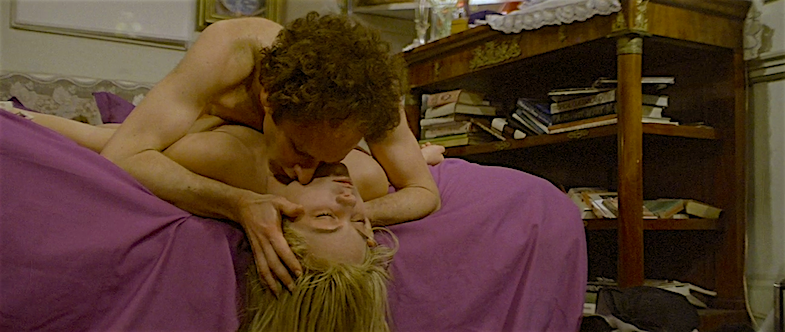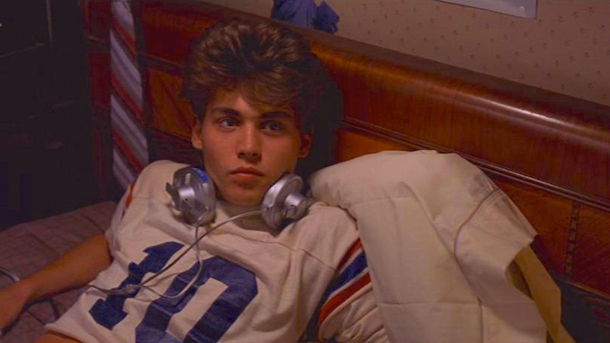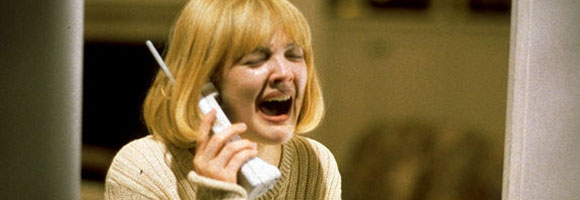
At this moment, it was still very much style over substance. But this would soon change.
Performance
Donald Cammell / Nicolas Roeg, 1970
Cinematography | Nicolas Roeg
Having the opportunity to interview or chat with a filmmaker is always interesting, but once in a while it can be somewhat magical. From time to time a highly respected and successful film artist manages to escape the limitations of celebrity. Not all celebrated filmmakers live in bubbles.
And while it often feels a thing of the past, there are still filmmakers who are more concerned with filmmaking as an art form than as the opportunity for the wealth of a franchise. No artist desires creating work that fails to connect with an audience, but there are some who are far more concerned with a personal vision than worrying about selling tickets. While this can create limitations for the filmmaker, it also presents a great level of freedom.
One such filmmaker is Nicolas Cage. If you’ve ever watched or read an interview with eccentric auteur you will be aware that his style of conversing is at once intellectual and rather free-form. His style of discussing his work, history and ideas often ramble, but they never miss their mark.
If you’ve ever had the pleasure of listening to Nicolas Roeg speak, you will note a highly intelligent and genuine man. It is impossible to miss the fact that he is so filled with ideas that he tends talk in meandering and circular logic sentences. Last year, after overcoming more than a few challenges, The Criterion Collection re-mastered and re-issued Don’t Look Now. It features a discussion filmed in 2003 at London’s Ciné Lumière. It is an entertaining discussion and fully captures the way in which Roeg communicates. More importantly, it lets us see how he thinks and more than a little insight into how he makes films. He has always stretched cinematography and film editing to the limits to mimic the ways the human mind works. It may not always appear logical if we can slow down long enough to notice the jumbled order of our thoughts, but we are able to connect the dots of our odd assortment of ideas to lead us to the ways in which we operate.
If there is one element that shines through when listening to Mr. Roeg is the constant desire to find ways for film to connect with the human brain. When he made his debut as a film director it was a collaboration with writer/director, Donald Cammell.

There is a great deal more going on behind James Fox’s “Johnny’s” violent actions than simple thuggery.
James Fox
Performance
Donald Cammell / Nicolas Roeg, 1970
Cinematography | Nicolas Roeg
That debut film was Performance. Essentially a thriller in which a thug makes the mistake of hiding out in the home of rock star and his two groupies. The “thrill” aspect of the film takes a long fall as the film quickly evolves into a surrealistic study of a drug-fueled, hallucinogenic trip into identity. The film remains firmly seated as a dated but groundbreaking film of its time featuring Mick Jagger playing the odd rock star who pulls James Fox into a great deal more than his own isolated world.
“Nothing is true, everything is permitted.”

There only appears to be no rules…
Mick Jagger
Performance
Donald Cammell / Nicolas Roeg, 1970
Cinematography | Nicolas Roeg
It is an iconic film. It is also offers a key insight into what would soon become Nic Roeg’s life long pursuit toward a whole new kind of cinematic language. The idea of filming and editing a film to reflect the inner-workings of the human mind is forming. As Performance was a collaborative effort and firmly rooted in the culture of late 1960’s Swinging London world of fashion, rock and drugs — the uses of this idea never fully form. Instead the film often employs stylistic choices of jittery fast cuts and odd perspectives that are as ornamental as they are meaningful. Even still Roeg’s approach human thought as a method of plot projection is there.

Even the smallest creatures fight to survive. A picnic in the outback turns into a journey of cruel awakening, self-discovery and survival. A Cinematographer becomes an Auteur.
Walkabout
Nicolas Roeg, 1971
Nicolas Roeg’s true directorial debut is filled with ideas and unique perceptions. A brother and sister escape the insanity of their troubled father to find themselves in the wilds of The Australian Outback. The title of the film comes from the Aboriginal concept of a male’s journey to adulthood. And with the assistance of a young man in the middle of his tribal ritual “walkabout” — the siblings journey through adversity and mystery toward their own adulthood.

What constantly threatens danger springs forward into a celebration of life’s possibilities…
Jenny Agutter
Walkabout
Nicolas Roeg, 1971
Along the way cultural differences cause confusion and alarm. It is a film about survival thanks to human kindness. But more than anything it is a startling view of how racism and cultural differences are so engrained, no amount of human kindness can make them go away. Roeg’s camera captures reality through a sort of surrealistic lens. The careful use of Antony Gibbs and Alan Pattillos’ editing allow us to view the realities and revelations from the perspective of two young adults and a child. It is here that we get a glimpse of identity perspective through the way the characters’ minds take in and view individual perceptions of experience.
A beautiful and tragic experimental film about both the strengths and flaws of the human condition. Another idea is put forward that hints that as our society applies more and more pressures, the concept of a walkabout could become a new sort of ritual for human beings contained within a society that only appears to offer safety and protection.

A young man takes a look at the land of his future and a shot becomes an iconic image.
David Gulpilil
Walkabout
Nicolas Roeg, 1971
When one watches Roeg’s 1980’s Bad Timing, a story of lust turned to obsession that not only pushes both individuals to the limits — it pulls one of them into the darkest corners of insanity. Bad Timing is graphic in the use of nudity, but the story it tells is not all that unusual. What makes this film standout as a work of cinematic art is the blending and discordant use of plot points into a fluid labyrinthine of perspectives that is often almost impossible to follow. The concept of flashback story-telling takes an almost hysterical detour into uncharted territories.
What often feels like a murder mystery is really far more complex in what it attempts to do. Bad Timing dares to toss a number of film genres our way, but the goal here is not suspense or even mystery. This film charts the deterioration of both the human mind and psyche after the requirements of desire, lust and sexual obsession have overtaken the rational.

“I’ll be dead in a minute; just wanted to say good-bye.”
Who is in control? Who is being seduced? And in what order are these experiences happening?
Art Garfunkel / Theresa Russell
Bad Timing
Nicolas Roeg, 1980
Cinematography | Anthony B. Richmond
Tony Lawson’s editing of Anthony B. Richmond’s oddly framed cinematography shifts the viewer perspective into a strange flow that is challenging to grasp. The majority of film critics and audiences at the time tended to dismiss the film. Art Garfunkel’s low-key performance mixing with Harvey Keitel’s intensity and Theresa Russell’s unhinged demonstration of carnal obsession often feels like a cinematic experiment with celluloid as rubber band. Bad Timing was so strange at the time it was released that it would take a good decade before it would be reconsidered and re-evaluated for the exceptional film it is. This film remains strange and refuses to give in.

“You tell the truth about a lie so beautifully.” Art Garfunkel / Theresa Russell Bad Timing Nicolas Roeg, 1980 Cinematography | Anthony B. Richmond
Don’t Look Now takes us to a Venice steeped in decay, sadness and uncertain dangers. We are led through a series of seemingly endless loop of dark tunnels. We pass over aged bridges in a fog of mystery. Hope can become deadly. Grief can become a release. Like life, nothing is at it appears. Constantly shifting back and forth in time which only becomes obvious upon a second screening. Everything is viewed with disconnected logic and paranormal hindsight. There is a constant confusion of “real-time” with conscious and subconscious perceptions. An unrelenting sense of déjà vu that our protagonist refuses to own or fully evaluate.

Nothing is what it appears…
Julie Christie
Don’t Look Now
Nicolas Roeg, 1973
Cinematography | Anthony B. Richmond
A cinematic masterwork that captures a young couple trying to re-connect and support each other in order to survive the worst experience life can offer. It is a truly horrific film that somehow manages to be both beautiful and hauntingly sad. This is a surreal horror film about love, guilt, connections and grief.
This controversial 1973 film remains Roeg’s most successful film. Don’t Look Now is perhaps the best example of how Nicolas Roeg’s films work.
These films are about a whole lot more than seeing — these films are about how we think.
Matty Stanfield, 2.8.2016















